Talylynn
Junction
Talyllyn Junction and the lost railways of rural Wales
From the world’s longest railway tunnel to the world’s smallest railway museum, Roger Reese sketches out more than two centuries of history at Talyllyn Junction
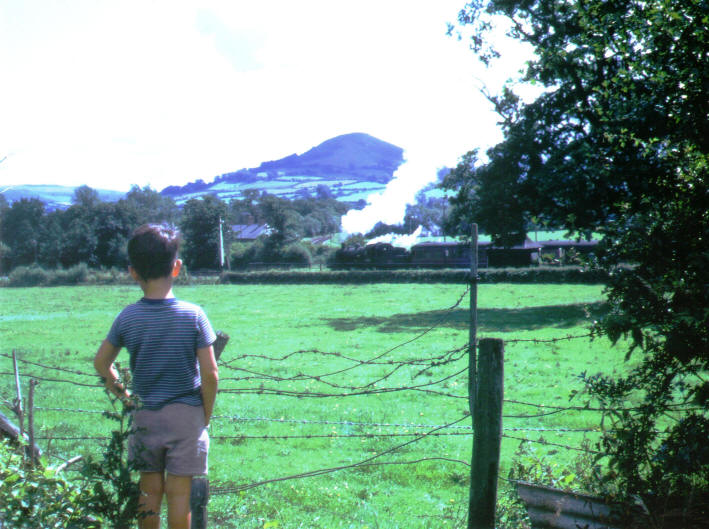 ‘Do
you know where I can see the site of the old railway station?’ is a
question frequently asked by visitors to our tiny village of Talyllyn.
Situated on a sharp bend on the road connecting Pennorth to the west and
Llanfihangel to the east and a kilometre from Llangors Lake, Talyllyn
owes its very existence to the railways. Arriving here today from either
direction you would not see any vestiges remaining of the railway
station nor of the complex junctions where the lines of three different
railway companies converged on their way to Brecon, five miles to the
west.
‘Do
you know where I can see the site of the old railway station?’ is a
question frequently asked by visitors to our tiny village of Talyllyn.
Situated on a sharp bend on the road connecting Pennorth to the west and
Llanfihangel to the east and a kilometre from Llangors Lake, Talyllyn
owes its very existence to the railways. Arriving here today from either
direction you would not see any vestiges remaining of the railway
station nor of the complex junctions where the lines of three different
railway companies converged on their way to Brecon, five miles to the
west. Go back 220 years and there would be nothing here except one farm, Brynderwen, with its elegant Georgian house subsequently sold separately and renamed Glynderi. So, what happened over two centuries ago to cause this bend in the road to transform into a village of forty households? The tramway – that’s what!
In 1816, at the very spot where the road bends sharply, a tunnel was punched through the hill, then known as Brynderwen Bank, to allow the Hay to Brecon tramway free passage. And for 46 years, horses would quietly plod their way to and from Brecon, pulling trams containing produce – mainly coal from the eastern valleys of South Wales – and returning with produce from the market.
The tunnel was therefore a key connection between industrial and agricultural Wales.
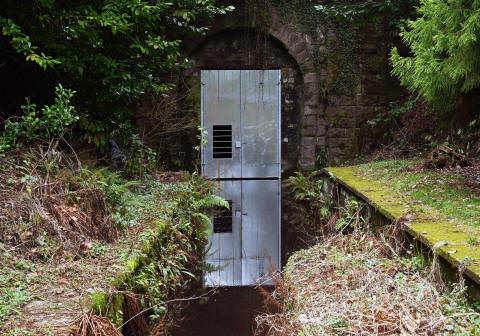
At 674 yards long the tunnel at Talyllyn became the longest tunnel in the world in continuous use (from 1816 to 1972) and the tramway itself was at one stage the longest tramway in use, stretching from Brecon to Kington, 37 miles away.
And as with all technology, one development is replaced by another – so the tramway was superseded by the steam railway. In May 1863 the railway came to Talyllyn using the same tunnel, which was enlarged during the previous year. The three lines converging here were The Midland Railway, The Mid Wales, and Brecon and Merthyr Railway. From this grew the development of Talyllyn station and the junction complex with a large engine shed, sidings, offices, telegraph poles, junction boxes, wells and water spouts, and a row of six railway workers’ cottages known as Cobbstown.
These cottages were built inside the junction triangle and were named after one of the key promoters of the Brecon and Merthyr Railway, Joseph Cobb. Now we had the makings of a village! Talyllyn needed a house for the Station Master. Today known as ‘The Firs’, this sits proudly above the eastern entrance to the tunnel in a prime position from where the Station Master could survey his kingdom. Passengers need refreshments so a suitable building was constructed which included living accommodation. Officially called Refreshment Rooms this was known locally as ‘The Refresh’, becoming popular with villagers and travellers alike. And slowly but surely more dwellings were built for the increasing number of railway employees. Around the turn of the twentieth century two rows of terraced houses were built along with some larger residences which turned the junction into a proper village.
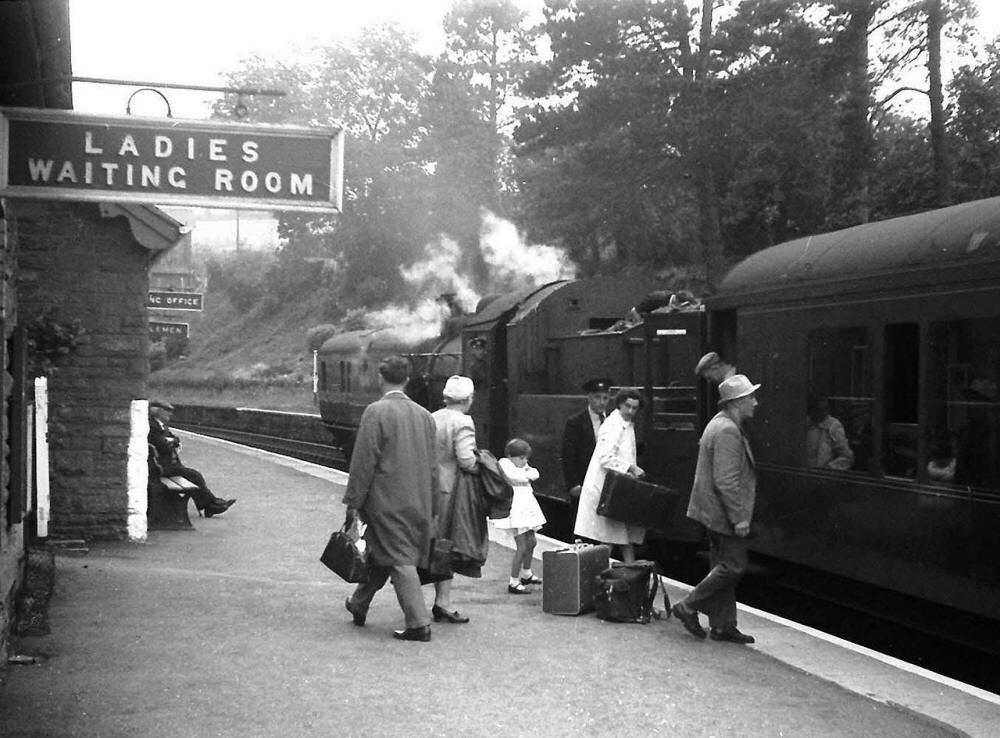
But in the 1960s Talyllyn’s status as a railway village came to a very
abrupt end with the closure of the line during the famous ‘Beeching
cuts’, a series of major route closures made as a result of the
restructuring of the nationalised railway system. In 1963 Richard
Beeching, then-chair of the British Railways Board identified 2,363
stations (over half of the total across Britain) for closure along with
5,000 miles of railway lines (a third of the total). Two years later, he
recommended the development of major trunk routes at the expense of
smaller rural railways such as those that criss-crossed our part of mid
Wales.
Now very little remains of the station and the junction except in the experiences and memories of those who worked on it, used it for business or pleasure, or indeed travelled on it to school. There are of course many photographs taken by railway enthusiasts from which we can remind ourselves what a lively country station this was – but what about all those stories and memories?
Realising that the ‘collective memory’ slowly disappears over time unless it is captured somehow, two residents of the village decided to create an archive of railway material. Roger Young has lived in Talyllyn since early childhood, whilst I settled in the village a mere 13 years ago. We persuaded other interested locals to join in the setting up of a Llyn Syfaddan History Group, that would promote local history and make it accessible to all members of the communities in the villages that surround Llyn Syfaddan (Llangors Lake). We arrange lectures, meetings, exhibitions and visits to sites of historical interest, and promote awareness of how local history can be linked to wider historical developments, often working with other groups, societies and organisations to mutual benefit.
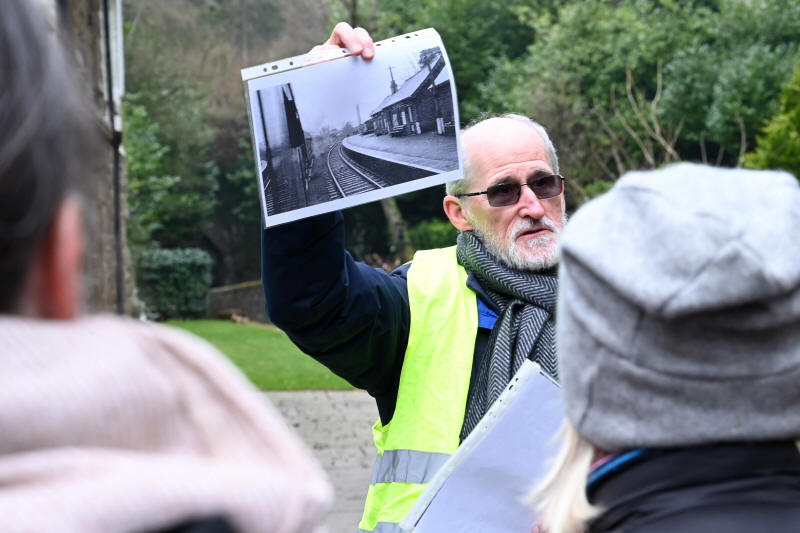
An early opportunity for the group was to adopt the Talyllyn telephone kiosk from the Community Council. An idea was hatched. What if the kiosk could be converted into a display area for visitors and the community, focused primarily on our railway heritage? With support from the Community Council and a grant from Bannau Brycheiniog National Park authority, a plan was produced to convert the kiosk and to enhance the surrounding verge area into a miniature railway museum and resting spot, giving a social focus to the village and encouraging visitors to stop and view the displays. A ‘memory bench’ is placed near a ‘memory book’ stored in a weatherproof container, and both residents and visitors are encouraged to record a memory or two about their life in Talyllyn.
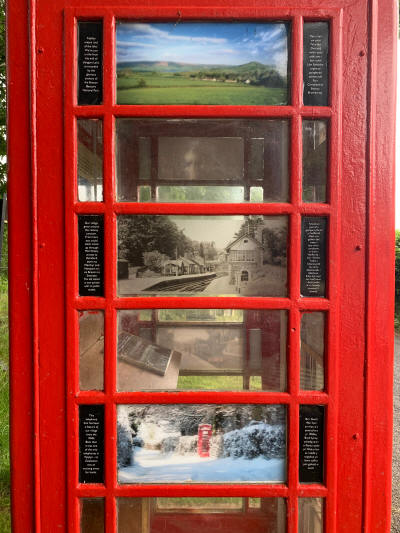
The conversion of the kiosk and verge was completed in 2019 and involved the local community in planning, fundraising, groundworks, designing, restoring and converting the kiosk. A ‘Grand Opening’ launched the museum, and was attended by most of the people who live in the village. A group of volunteers now keeps the museum and verge in good condition
We have a growing collection of written and oral personal memories to add to our visual records which is truly heartening. So now when someone says ‘Do you know where I can see the site of the old railway station?’, we can not only direct them to its former site, but we can invite them inside our own museum!
Roger Reese is a founder of the Llyn Syfaddan History Group.
.
Now very little remains of the station and the junction except in the experiences and memories of those who worked on it, used it for business or pleasure, or indeed travelled on it to school. There are of course many photographs taken by railway enthusiasts from which we can remind ourselves what a lively country station this was – but what about all those stories and memories?
Realising that the ‘collective memory’ slowly disappears over time unless it is captured somehow, two residents of the village decided to create an archive of railway material. Roger Young has lived in Talyllyn since early childhood, whilst I settled in the village a mere 13 years ago. We persuaded other interested locals to join in the setting up of a Llyn Syfaddan History Group, that would promote local history and make it accessible to all members of the communities in the villages that surround Llyn Syfaddan (Llangors Lake). We arrange lectures, meetings, exhibitions and visits to sites of historical interest, and promote awareness of how local history can be linked to wider historical developments, often working with other groups, societies and organisations to mutual benefit.

An early opportunity for the group was to adopt the Talyllyn telephone kiosk from the Community Council. An idea was hatched. What if the kiosk could be converted into a display area for visitors and the community, focused primarily on our railway heritage? With support from the Community Council and a grant from Bannau Brycheiniog National Park authority, a plan was produced to convert the kiosk and to enhance the surrounding verge area into a miniature railway museum and resting spot, giving a social focus to the village and encouraging visitors to stop and view the displays. A ‘memory bench’ is placed near a ‘memory book’ stored in a weatherproof container, and both residents and visitors are encouraged to record a memory or two about their life in Talyllyn.

The conversion of the kiosk and verge was completed in 2019 and involved the local community in planning, fundraising, groundworks, designing, restoring and converting the kiosk. A ‘Grand Opening’ launched the museum, and was attended by most of the people who live in the village. A group of volunteers now keeps the museum and verge in good condition
We have a growing collection of written and oral personal memories to add to our visual records which is truly heartening. So now when someone says ‘Do you know where I can see the site of the old railway station?’, we can not only direct them to its former site, but we can invite them inside our own museum!
Roger Reese is a founder of the Llyn Syfaddan History Group.
.